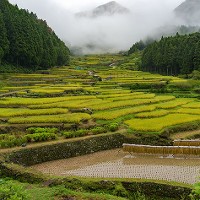05 November 2021
Mapping foodscapes to future-proof global food production systems
Food production is an essential life support system for humans and securing future production capacity is key if society is to persist.
However, farming methods are frequently harmful to the delicate environments that support food production, making the way humans cultivate food inefficient and unsustainable.
Identifying pathways toward a transformative change in these methods is therefore a top priority.
Before we can transform global agricultural practices, we need to be able to see the bigger picture and understand both the many and varied local settings in which food producers operate and the commonalities of food production systems across the globe.
A collaboration between IIASA and The Nature Conservancy – a global conservation organization dedicated to conserving lands and waters – and SYSTEMIQ – a systems change company that partners with business, finance, policymakers, and civil society to make economic systems sustainable – has separated the many and varied subsystems that support food production into the concept of 'foodscapes' that could enable food systems transformation.
Foodscapes are the localized building blocks that global food systems are built on.
They are the specific combinations of biophysical characteristics like soils and climates, and management attributes like tillage techniques, fertilizer intensities, and crop types.
By identifying and documenting foodscapes that lie at the foundation of local food systems but can occur globally in comparable forms, science can bridge the gap between abstract solutions and local needs and formulate pathways to enhance food production globally.
This in principle allows transferring knowledge and approaches for sustainable management from one place to another and is one of the key advantages of such a foodscape typology system.
"Global sustainability outcomes of land use actions crucially depend on which geographic entities we use as planning units. But is sustainability best defined on the field, farm, jurisdictional, national or macro-regional level? With the foodscapes concept we attempt to find a geographic 'sweet spot' definition for sustainable food systems and land use action planning," says IIASA researcher, Michael Obersteiner, one of the initiators of the project's foodscape concept.
The report, Foodscapes: Toward food system transition was published on 21 October 2021 and represents the most advanced research and mapping effort on foodscapes to date.
It identifies pathways towards transformative change in the food sector and draws on global expertise, but on a local scale with individual case studies aimed at informing the transition toward more sustainable food production.
The report encompasses over 80 foodscape classes identified through a combination of multiple datasets to build an integrated picture of the biophysical drivers of food production such as soil type and climate, and management variables that include crop type, water management, and agronomic considerations.
IIASA researcher, Martin Jung, who helped develop the global map highlights said, "The foodscapes we mapped could prove to be a new class of fundamental food production units that integrate multiple dimensions of where and how people grow food."
The report will help inform the vital transformations needed to ensure worldwide food security into the future by bringing local context to global outlooks and supplying important realities such as political and economic necessities of food-producing communities.
It also highlights the many threats and opportunities that food production faces currently and in the future.
"The concept of foodscapes provides novel opportunities for scenario analyses of agricultural land management as it employs the scale of clearly defined landscapes and therefore goes beyond the sole consideration of its primary productive elements such as cropland and grassland," explains IIASA researcher, Christian Folberth, who led the scenario analysis on nature-based solutions for foodscapes on the project.
From there, nature-based initiatives aimed at addressing climate, biodiversity, food, and livelihood goals can be formed to fit local conditions.
Three broad categories of nature-based solutions are identified:
- Agroecology and regenerative agriculture practices that restore landscapes in ways that both foster biodiversity and improve its ability to produce healthy food in both cropping and grazing systems.
- Restorative aquaculture, sustainably managed fisheries, and mariculture production methods that restore ecological function and ecosystem health that has been degraded due to historical production practices, pollution, and overexploitation of fisheries.
- Protection and restoration practices for natural ecosystems that include both halting conversion of forest and grasslands for agriculture and restoring secondary forest and degraded grasslands.
A complete introduction to the report can be found on The Nature Conservancy website which contains a link to download the full foodscapes report.
Reference
Bossio D., Obersteiner M., Wironen M., Jung M., Wood S., Folberth C., Boucher T., Alleway H., Simons R., Bucien K., Dowell L., Cleary D., Jones., R. (2021). Foodscapes: Toward Food System Transition. The Nature Conservancy, International Institute for Applied Systems Analysis, and SYTEMIQ. ISBN: 978-0-578-31122-7 [pure.iiasa.ac.at/17597]




NEWS
"Climate Modernity" - The 24H Challenge: How do we want to live and act in the future in Styria ?
Health fears can increase pandemic isolation habits in older Europeans
How circular waste management systems can benefit the environment
Launch of the Northern African Applied Systems Analysis Centre
How we measure the effects of methane matters for climate policy


